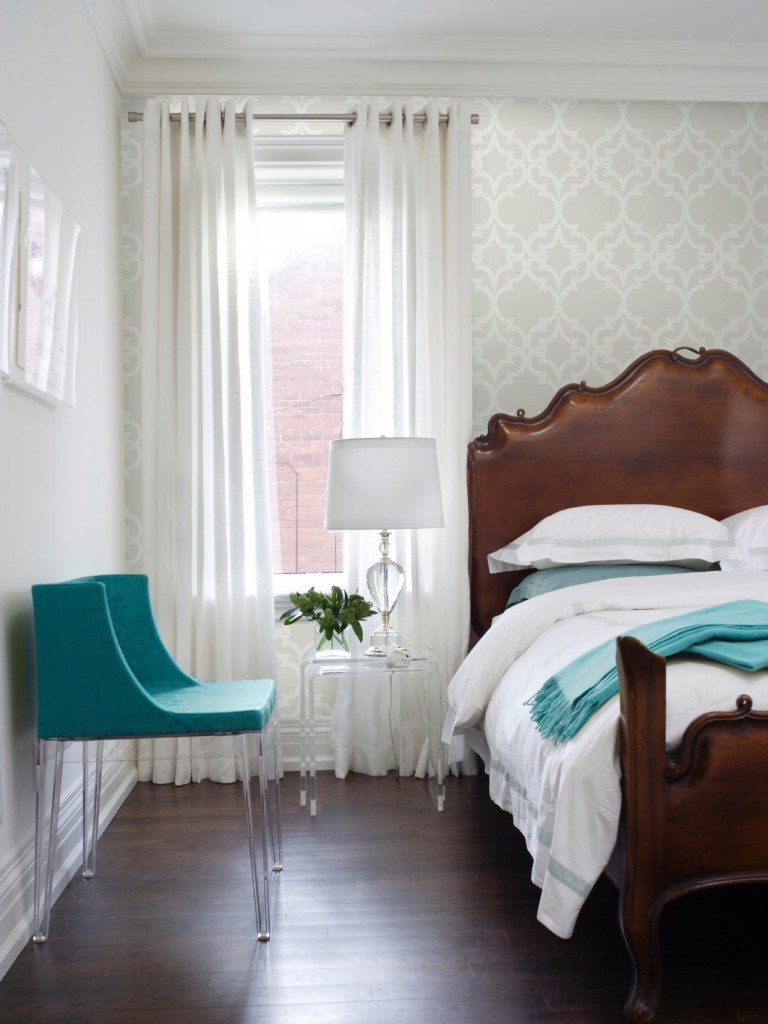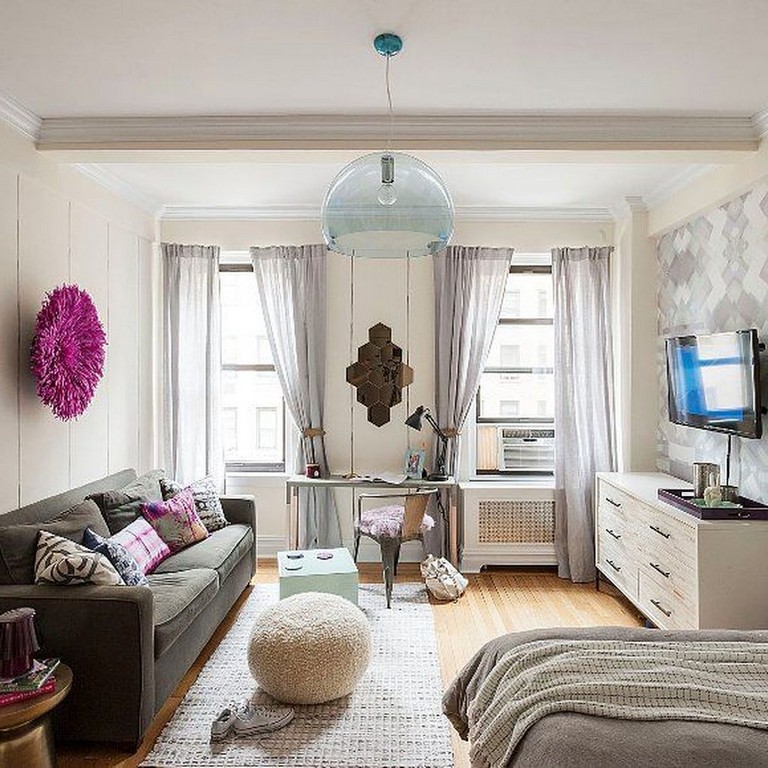 Source: bing.com
Source: bing.comDecorating a small bedroom on a budget can be challenging, but it’s not impossible. With some creativity and smart choices, you can turn your tiny bedroom into a cozy and stylish retreat without breaking the bank. In this article, we’ll share some apartment small bedroom decorating ideas on a budget that will help you make the most of your space and create a comfortable and inviting atmosphere.
1. Start with a Plan
 Source: bing.com
Source: bing.comThe first step in decorating a small bedroom is to make a plan. Measure your room and create a floor plan that shows the placement of your furniture and accessories. This will help you visualize how your room will look and avoid buying items that won’t fit. When creating your plan, consider the function of your room and focus on the essentials. A bed, bedside table, and storage space are the basic elements of a bedroom, and you can build your design around them.
2. Choose the Right Color Scheme
 Source: bing.com
Source: bing.comThe right color scheme can make a small bedroom feel spacious and airy. Light colors such as white, beige, and pastels reflect light and create an illusion of space, while dark colors can make a room feel smaller. You can use a monochromatic color scheme, where you use different shades of the same color, or a complementary color scheme, where you combine colors that are opposite each other on the color wheel. Don’t be afraid to add some pops of color with accessories or artwork to create interest.
3. Maximize Your Storage Space
 Source: bing.com
Source: bing.comOne of the biggest challenges of a small bedroom is the lack of storage space. To maximize your storage space, consider using multifunctional furniture such as a bed with built-in storage or a storage ottoman. You can also use vertical space by adding shelves or hanging organizers. Use baskets or boxes to keep your items organized and out of sight.
4. Create a Focal Point
 Source: bing.com
Source: bing.comA focal point can add visual interest to your room and draw attention away from its size. You can create a focal point by adding a statement piece such as a bold headboard, a piece of artwork, or a colorful rug. Place your focal point on the wall opposite your bed to create a sense of balance.
5. Use Mirrors
 Source: bing.com
Source: bing.comMirrors can create an illusion of space and reflect light, making your room feel brighter and more open. Use a large mirror on one of your walls or add a mirrored piece of furniture such as a dresser or a nightstand. You can also use a mirrored wardrobe door to create the illusion of a bigger closet space.
6. Add Textures
 Source: bing.com
Source: bing.comTextures can add depth and visual interest to your room. Use different textures such as a plush rug, a cozy throw, or a textured wall covering to create a layered and inviting look. Mix and match textures to create a balance between softness and visual interest.
7. Choose the Right Lighting
 Source: bing.com
Source: bing.comThe right lighting can create a cozy and inviting atmosphere in your room. Use a combination of ambient, task, and accent lighting to create a balance between functionality and ambiance. Add a dimmer switch to your overhead lighting to adjust the mood of your room. You can also use string lights or a small table lamp to create a warm and intimate atmosphere.
8. Add Some Greenery
 Source: bing.com
Source: bing.comPlants can add life and color to your room and improve air quality. Choose low-maintenance plants such as succulents or snake plants that don’t require a lot of sunlight or water. You can place your plants on a windowsill, a shelf, or a plant stand to create a natural and calming atmosphere.
9. Mix and Match Styles
 Source: bing.com
Source: bing.comYou don’t have to stick to one style when decorating your small bedroom. Mix and match styles to create a personalized and eclectic look. Combine modern and vintage elements, or add some bohemian or rustic touches to create a unique and inviting atmosphere.
10. DIY Your Decor
 Source: bing.com
Source: bing.comDIY projects can add a personal touch to your room and save you money. You can create your own artwork, pillows, or curtains using inexpensive materials such as fabric or paint. You can also repurpose old items such as crates or pallets to create unique and functional storage solutions.
11. Use Wall Space
 Source: bing.com
Source: bing.comWall space can provide valuable storage space and add visual interest to your room. Use wall-mounted shelves to display your books or accessories, or add a pegboard to hang your jewelry or scarves. You can also use wall decals or wallpaper to add color and pattern to your room.
12. Keep it Simple
 Source: bing.com
Source: bing.comWhen decorating a small bedroom, less is often more. Keep your decor simple and uncluttered to create a sense of calm and spaciousness. Avoid using too many patterns or colors that can overwhelm your space. Focus on functionality and comfort, and choose items that serve a purpose.
13. Invest in Good Bedding
 Source: bing.com
Source: bing.comInvesting in good bedding can make a big difference in the comfort and style of your room. Choose bedding that is soft and comfortable, and that complements your color scheme and style. You can add some interest with different textures or patterns, but avoid using too many decorative pillows that can take up valuable space.
14. Create a Reading Nook
 Source: bing.com
Source: bing.comA reading nook can add a cozy and relaxing spot to your room. Choose a corner or a window area and add a comfortable chair, a small table, and a lamp. You can also add some cushions or a throw to make it even more inviting. Use this space to read, meditate, or simply relax.
15. Hang Your Curtains High
 Source: bing.com
Source: bing.comHanging your curtains high can create an illusion of height and space in your room. Install your curtain rod close to the ceiling and let your curtains hang all the way down to the floor. Use light or sheer curtains to allow natural light to filter in, or choose blackout curtains for privacy and darkness.
16. Add Some Artwork
 Source: bing.com
Source: bing.comArtwork can add personality and style to your room. Choose pieces that complement your color scheme and style, and that reflect your interests and personality. You can hang your artwork on the wall or lean it against a shelf or a dresser. Use a mix of framed and unframed pieces to create a gallery wall.
17. Use a Headboard
 Source: bing.com
Source: bing.comA headboard can add a focal point and a sense of structure to your room. Choose a headboard that complements your decor style and that is proportionate to your bed size. You can also use a DIY headboard made from reclaimed wood or fabric to create a unique and personalized look.
18. Add Some Metallic Accents
 Source: bing.com
Source: bing.comMetallic accents can add a touch of glamour and sophistication to your room. Use metallic accessories such as a mirrored tray, a metallic lamp, or a metallic vase to add some shine and sparkle. You can also use metallic wallpaper or a metallic paint to create an accent wall.
19. Create a Gallery Wall
 Source: bing.com
Source: bing.comA gallery wall can add interest and personality to your room. Choose a wall and collect a mix of framed and unframed artwork, photographs, and other items such as mirrors or shadow boxes. Arrange your items in a cohesive and balanced way, and use different sizes and shapes to create visual interest.
20. Use Multi-Purpose Furniture
 Source: bing.com
Source: bing.comMulti-purpose furniture can save you valuable space and add functionality to your room. Choose furniture that serves more than one purpose such as a storage ottoman, a futon sofa bed, or a desk with built-in storage. You can also use a room divider or a bookshelf to separate your room into different areas.
21. Add Some Texture with Rugs
 Source: bing.com
Source: bing.comRugs can add warmth and texture to your room. Choose a rug that complements your color scheme and that is proportionate to your room size. You can place your rug under your bed or in front of your dresser or chair to create a visual anchor. Use different textures such as shag or wool to add interest.
22. Use Foldable Furniture
 Source: bing.com
Source: bing.comFoldable furniture can save you space when you don’t need it. Choose items such as a foldable chair, a folding table, or a rollaway bed that you can easily store away when not in use. You can also use a folding screen or a curtain to create a temporary room divider.
23. Add Some Pattern with Wallpaper
 Source: bing.com
Source: bing.comWallpaper can add pattern and interest to your room. Choose a wallpaper that complements your color scheme and that reflects your personality. You can use wallpaper on an accent wall or on all four walls to create a dramatic effect. Use a pattern that is proportional to your room size and that doesn’t overwhelm your space.
24. Use Floating Shelves
 Source: bing.com
Source: bing.comFloating shelves can add storage space and visual interest to your room. Choose shelves that are proportionate to your wall size and that complement your decor style. Use them to display your books, accessories, or plants. You can also use them as a nightstand or as a desk.
25. Use Underbed Storage
 Source: bing.com
Source: bing.comUnderbed storage can provide valuable space for your belongings. Choose underbed storage containers that are proportionate to your bed size and that are easy to access. Use them to store your off-season clothes, extra bedding, or shoes. You can also use a bed skirt to hide your underbed storage.
26. Use a Room Divider
 Source: bing.com
Source: bing.comA room divider can create separate zones in your room and add visual interest. Choose a divider that complements your decor style and that is proportionate to your room size. You can use a bookshelf, a folding screen, or a curtain to create a temporary wall. Use this space to create a workspace, a dressing area, or a seating area.
